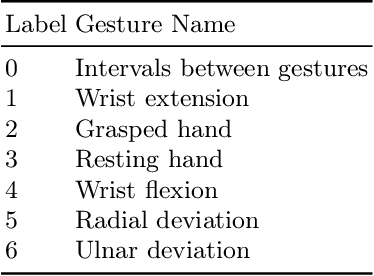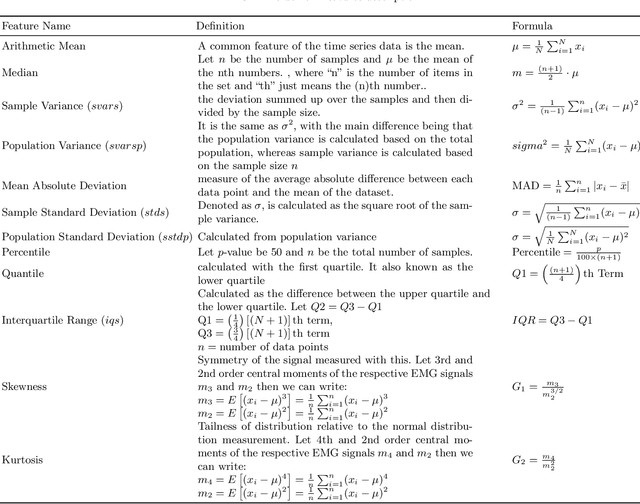Nobuyoshi Asai
Hybrid CNN-BYOL Approach for Fault Detection in Induction Motors Using Thermal Images
Oct 09, 2025Abstract:Induction motors (IMs) are indispensable in industrial and daily life, but they are susceptible to various faults that can lead to overheating, wasted energy consumption, and service failure. Early detection of faults is essential to protect the motor and prolong its lifespan. This paper presents a hybrid method that integrates BYOL with CNNs for classifying thermal images of induction motors for fault detection. The thermal dataset used in this work includes different operating states of the motor, such as normal operation, overload, and faults. We employed multiple deep learning (DL) models for the BYOL technique, ranging from popular architectures such as ResNet-50, DenseNet-121, DenseNet-169, EfficientNetB0, VGG16, and MobileNetV2. Additionally, we introduced a new high-performance yet lightweight CNN model named BYOL-IMNet, which comprises four custom-designed blocks tailored for fault classification in thermal images. Our experimental results demonstrate that the proposed BYOL-IMNet achieves 99.89\% test accuracy and an inference time of 5.7 ms per image, outperforming state-of-the-art models. This study highlights the promising performance of the CNN-BYOL hybrid method in enhancing accuracy for detecting faults in induction motors, offering a robust methodology for online monitoring in industrial settings.
Machine Learning-Based Differential Diagnosis of Parkinson's Disease Using Kinematic Feature Extraction and Selection
Jan 02, 2025Abstract:Parkinson's disease (PD), the second most common neurodegenerative disorder, is characterized by dopaminergic neuron loss and the accumulation of abnormal synuclein. PD presents both motor and non-motor symptoms that progressively impair daily functioning. The severity of these symptoms is typically assessed using the MDS-UPDRS rating scale, which is subjective and dependent on the physician's experience. Additionally, PD shares symptoms with other neurodegenerative diseases, such as progressive supranuclear palsy (PSP) and multiple system atrophy (MSA), complicating accurate diagnosis. To address these diagnostic challenges, we propose a machine learning-based system for differential diagnosis of PD, PSP, MSA, and healthy controls (HC). This system utilizes a kinematic feature-based hierarchical feature extraction and selection approach. Initially, 18 kinematic features are extracted, including two newly proposed features: Thumb-to-index vector velocity and acceleration, which provide insights into motor control patterns. In addition, 41 statistical features were extracted here from each kinematic feature, including some new approaches such as Average Absolute Change, Rhythm, Amplitude, Frequency, Standard Deviation of Frequency, and Slope. Feature selection is performed using One-way ANOVA to rank features, followed by Sequential Forward Floating Selection (SFFS) to identify the most relevant ones, aiming to reduce the computational complexity. The final feature set is used for classification, achieving a classification accuracy of 66.67% for each dataset and 88.89% for each patient, with particularly high performance for the MSA and HC groups using the SVM algorithm. This system shows potential as a rapid and accurate diagnostic tool in clinical practice, though further data collection and refinement are needed to enhance its reliability.
EMG-Based Hand Gesture Recognition through Diverse Domain Feature Enhancement and Machine Learning-Based Approach
Aug 25, 2024



Abstract:Surface electromyography (EMG) serves as a pivotal tool in hand gesture recognition and human-computer interaction, offering a non-invasive means of signal acquisition. This study presents a novel methodology for classifying hand gestures using EMG signals. To address the challenges associated with feature extraction where, we explored 23 distinct morphological, time domain and frequency domain feature extraction techniques. However, the substantial size of the features may increase the computational complexity issues that can hinder machine learning algorithm performance. We employ an efficient feature selection approach, specifically an extra tree classifier, to mitigate this. The selected potential feature fed into the various machine learning-based classification algorithms where our model achieved 97.43\% accuracy with the KNN algorithm and selected feature. By leveraging a comprehensive feature extraction and selection strategy, our methodology enhances the accuracy and usability of EMG-based hand gesture recognition systems. The higher performance accuracy proves the effectiveness of the proposed model over the existing system. \keywords{EMG signal, machine learning approach, hand gesture recognition.
 Add to Chrome
Add to Chrome Add to Firefox
Add to Firefox Add to Edge
Add to Edge